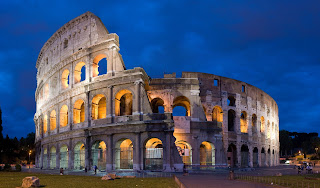History of Alfa Romeo- Try and beat us! - http://www.autosmithcar.com/
Once motor sports resumed after the Second World War, Alfa Romeo proved to be the car to beat in Grand Prix events. The introduction of the new formula (Formula One) for single-seat racing cars provided an ideal setting for Alfa Romeo's Tipo 158 Alfetta, adapted from a pre-war voiturette, and Giuseppe Farina won the first Formula One World Championship in 1950 in the 158. Juan Manuel Fangio secured Alfa's second consecutive championship in 1951.
| Year | Cars |
|---|---|
| 1998 | 197,680 |
| 1999 | 208,336 |
| 2000 | 206,836 |
| 2001 | 213,638 |
| 2002 | 187,437 |
| 2003 | 182,469 |
| 2004 | 162,179 |
| 2005 | 130,815 |
| 2006 | 157,794 |
| 2007 | 151,898 |
| 2008 | 103,097 |
| 2009 | 103,687 |
| 2010 | 119,451 |
| 2011 | 130,535 |
| 2012 | 101,000[12] |
| 2013 | 74,000 |
| 2014 | 58,948[2] |
| 2015 | 56,688[2] |
| 2016 | 66,155[2] |
In 1952, Alfa Romeo experimented with its first front-wheel drive compact car, "Project 13-61".[13] It had the same transverse-mounted, forward-motor layout as the modern front-wheel drive automobile. Alfa Romeo made a second attempt toward the late 1950s based on Project 13-61. It was to be called Tipo 103 and resembled the smaller version of its popular Alfa Romeo Giulia. However, due to the financial difficulties in post-war Italy, the Tipo 103 never saw production. Had Alfa Romeo produced it, it would have preceded the Mini as the first "modern" front-wheel drive compact car. In the mid-fifties, Alfa Romeo entered into an agreement with Brazil's Matarazzo Group to create a company called Fabral (Fábrica Brasileira de Automóveis Alfa, "the Brazilian Alfa automobile factory") to build the Alfa Romeo 2000 there. After having received government approval, Matarazzo pulled out and under pressure from Brazil's President Juscelino Kubitschek the state-owned FNM company instead commenced building the car as the "FNM 2000" there in 1960.[14]
During the 1960s, Alfa Romeo concentrated on competition using production-based cars, including the GTA (standing for Gran Turismo Allegerita), an aluminium-bodied version of the Bertone-designed coupe with a powerful twin-plug engine. Among other victories, the GTA won the inaugural Sports Car Club of America's Trans-Am championship in 1966. In the 1970s, Alfa Romeo concentrated on prototype sports car racing with the Tipo 33, with early victories in 1971. Eventually the Tipo 33TT12 gained the World Championship for Makes for Alfa Romeo in 1975 and the Tipo 33SC12 won the World Championship for Sports Cars in 1977.[15][16]
By the 1970s, Alfa Romeo was again in financial trouble and creative measures were attempted to shore it up, including an ultimately unsuccessful joint venture with Nissan endorsed by Ettore Massacesi of Alfa Romeo's parent company, the Italian-government owned Istituto per la Ricostruzione Industriale (IRI) and Prime Minister Francesco Cossiga. By 1986, IRI was suffering heavy losses, and IRI president Romano Prodiput Alfa Romeo up for sale. Finmeccanica, the mechanical holdings arm of IRI and its predecessors owned Alfa Romeo since 1932. Prodi first approached fellow Italian manufacturer Fiat, which offered to start a joint venture with Alfa. Prodi was initially unsupportive, citing the strained industrial relations between Northern and Southern Italy, with Fiat being based in Turin and Alfa being based in Milan.[dubious ]
Fiat withdrew its plan for a joint venture when Ford put in an offer to acquire part of Alfa Romeo and restructure the company, while increasing its stake over time. However, Fiat put in a bid to acquire the entirety of Alfa Romeo and offer job guarantees to Italian workers, an offer that Ford was unwilling to match.
It also did not hurt any of the parties involved that an acquisition by Fiat would keep Alfa Romeo in Italian hands. In 1986, the deal was concluded with Alfa Romeo merged with traditional rival Lancia into Fiat's Alfa Lancia Industriale S.p.A.
Models produced from the 1990s combined Alfa's traditional virtues of avant-garde styling and sporting panache with the economic benefits of product rationalisation, and include a "GTA" version of the 147 hatchback, the Giugiaro-designed Brera, and a high-performance exotic called the 8C Competizione (named after one of Alfa's most successful prewar sports and racing cars, the 8C of the 1930s).
In 2005 Maserati was bought back from Ferrari and under Fiat's full control. The Fiat Group plans to create a sports and luxury division from Maserati and Alfa Romeo.[17] There is a planned strategic relationship between these two; engines, platforms and possibly dealers will be shared in some markets.[18]
In the beginning of 2007, Fiat Auto S.p.A. was reorganized and four new automobile companies were created; Fiat Automobiles S.p.A., Alfa Romeo Automobiles S.p.A., Lancia Automobiles S.p.A. and Fiat Light Commercial Vehicles S.p.A. These companies are fully owned by Fiat Group Automobiles S.p.A




Comments
Post a Comment